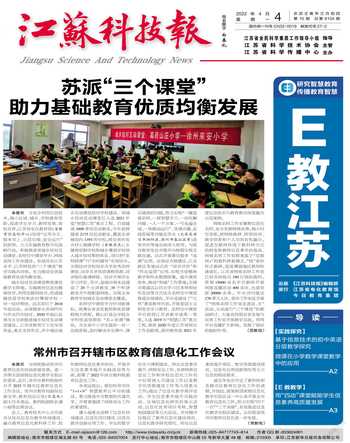一起重新構想我們的未來
Expanding knowledge, data, and evidence
Successful knowledge production for the futures of education will need to become consciously inclusive, socially and culturally diverse, inter-disciplinary and inter-professional, and able to foster communication, collaboration, ownership and mutual learning.
Big data and the changing nature of knowledge
Technological advancements have generated new assumptions about what knowledge is and how it should be generated. Our current technologies have contributed to expectations that information, and the knowledge and understandings it gives rise to, will be big (drawn from multiple data points, not singular experiences), searchable (retrievable and easy to find), storable (able to be archived), transmissible (seamlessly sharable), and individualizable (optimized for personal consumption). Each of these qualities merit careful examination because they frame and mould ideas about education, including its purposes and processes, opening some possibilities and closing others.
Greater access to digital tools has given researchers unprecedented power to organize, synthesize, and process wider educational data sets than ever before. The power of digital methods, instruments, data collection and storage, and algorithmic data processing has kindled great enthusiasm in terms of how they can be used to advance understanding, practice and effectiveness of educational methods and approaches. Statistical data processing and charting, geographic mapping, network mapping, pattern seeking, and keyword tracing are among the tools that researchers can deploy. There is also great opportunity for research on the increasingly digitized aspects of our educational lives.
As with any tools, it is important for researchers to clarify what can and cannot be achieved through digital research instruments. Depending on the purpose of a given inquiry, more data is not necessarily better or more precise. The insights that computers can arrive at are not the same as those available to human beings. Sometimes software can reveal surprising and illuminating findings because of their ability to process data at greater scales and paces than humans ever could through analogue methods. Other times, human minds can understand contexts, meaning, values, and implications in ways far too sophisticated for AI.
As researchers draw on the immense potential of big data and digital tools in education, we must resist being enamoured with digital analytic software for the presentation of presumed objectivity. In particular, we need to continually evaluate the biases and blind spots of our digital research methods from a lens of justice and equity, to account for what lies beyond the purview of its programming. If these trends continue, there is considerable danger that in 2050 much of our knowledge will have become reshaped into quantitative, algorithm-friendly, molecular, easily storable, rapidly shareable forms that are only accessible through the mediation of digital devices. We should be concerned that the exploding field of AI seeks to make these properties self-sustaining, autonomous and independent of human management. The ethical risks of such ambitions will need vigilant attention over the next thirty years.
Innovating educational futures
Innovation in education reflects the ability to experiment, share, extend, and inspire others. It is possible at every site and scale, from a teacher working with an individual student or class, to school-wide or country-wide approaches. Innovation is often the fruit of much collaboration and inspiration from the experiences and successes of other educators, policy-makers, researchers, and schools in diverse contexts.
Actors within educational systems are also important sources of innovative approaches and insights. Innovations that are entirely imposed from ‘outside’ the field will necessarily be limited, or even distorted, in their insights and proposed solutions. Educational knowledge is produced and legitimated in a range of ways. Its central actors — teachers, students, principals, schools, etc. — are all participants in the production of research and innovation. Curriculum development and reform can be especially enriched through the contributions of those who use it, as they enter into deeper participation with the knowledge commons. Governments have an important role to play in this regard, providing adequate support for teachers and schools to participate in dialogue and revision of public education systems and processes.
譯文
擴展知識、數據和證據
成功的面向教育未來的知識生產需要有意識地做到包容性、社會和文化多樣性、跨學科和跨專業,并能夠促進溝通、協作、知識所有權和相互學習。
大數據和本質特征在不斷變化的知識
技術進步促使產生了關于什么是知識以及如何產生知識的新假設。我們目前的技術有助于實現這樣的前景:信息及其帶來的知識和理解將是巨大的(來自多個數據點,而不是單一的經驗)、可搜索的(可檢索且易于找到)、可存儲的(能存檔)、可傳輸的(能無縫共享)、個性化的(針對個人消費進行了優化)。這些品質中的每一種都值得仔細檢查,因為它們構成和塑造了關于教育的觀念,包括教育的目的和過程,創造了一些可能性,消除了另一些可能性。
更多地使用數字工具,使研究人員擁有更前所未有的能力來組織、綜合和處理更廣泛的教育數據集。如何利用數字方法、儀器、數據收集和存儲以及算法數據處理的力量,來促進對教育方法和方式的理解、實踐和有效性,激發了人們極大的熱情。統計數據處理和圖表、地理制圖、網絡制圖、模式搜索和關鍵詞追蹤都是研究人員可以部署的工具。這也為研究我們教育生活的日益數字化提供了很好的機會。
與任何工具一樣,研究人員必須明確,通過數字研究工具可以實現什么和不能實現什么,這一點很重要。根據給定調查的目的,更多的數據并不一定意味著更好或更精確。計算機所能獲得的洞察力與人類所能獲得的不同。有時,軟件可以揭示令人驚訝和啟發性的發現,因為它們能夠通過模擬方法,以比人類更大的規模和更快的速度處理數據。其他時候,人類的大腦可以以人工智能無法理解的方式理解上下文、含義、價值觀和暗示。
當研究人員利用大數據和數字工具在教育中的巨大潛力時,我們必須抵制為呈現假定的客觀性而沉迷于數字分析軟件。特別是,我們需要從公正公平的角度不斷評估我們對數字研究方法的偏見和盲點,以解釋其編程范圍外的內容。如果任由這些趨勢繼續發展,那么在2050年,我們的許多知識將有相當大的危險,它們將被重新塑造成定量的、算法友好的、分子的、易于存儲的、快速共享的形式,而這些形式只能通過數字設備來實現。我們應該關注的是,人工智能領域的爆炸式發展試圖使這些知識屬性自我維持、自主并獨立于人類管理。在接下來的三十年里,我們需要警惕這種野心的道德風險。
創新教育的未來
教育創新反映了實驗、分享、擴展和激勵他人的能力。從與單個學生或班級合作的代課教師,再到全校或全國的方式,任何地點和規模都有可能。創新往往來自大量合作的成果,以及來自其他教育工作者、決策者、研究人員和學校在不同背景下的經驗和成功的啟發。
教育系統中的參與者也是創新方法和見解的重要來源。完全來自領域“外部”的創新在其見解和提出的解決方案中必然會受到限制,甚至扭曲。教育知識是以一系列方式產生和合法化的,其核心參與者(教師、學生、校長、學校等)都是研究和創新成果的參與者。課程開發和改革可以因使用它的人的貢獻得到豐富,因為他們更深入地參與知識共享。政府在這方面可以發揮重要作用,為教師和學校提供充分的支持,以參與公共教育系統和進程的對話和修訂。

